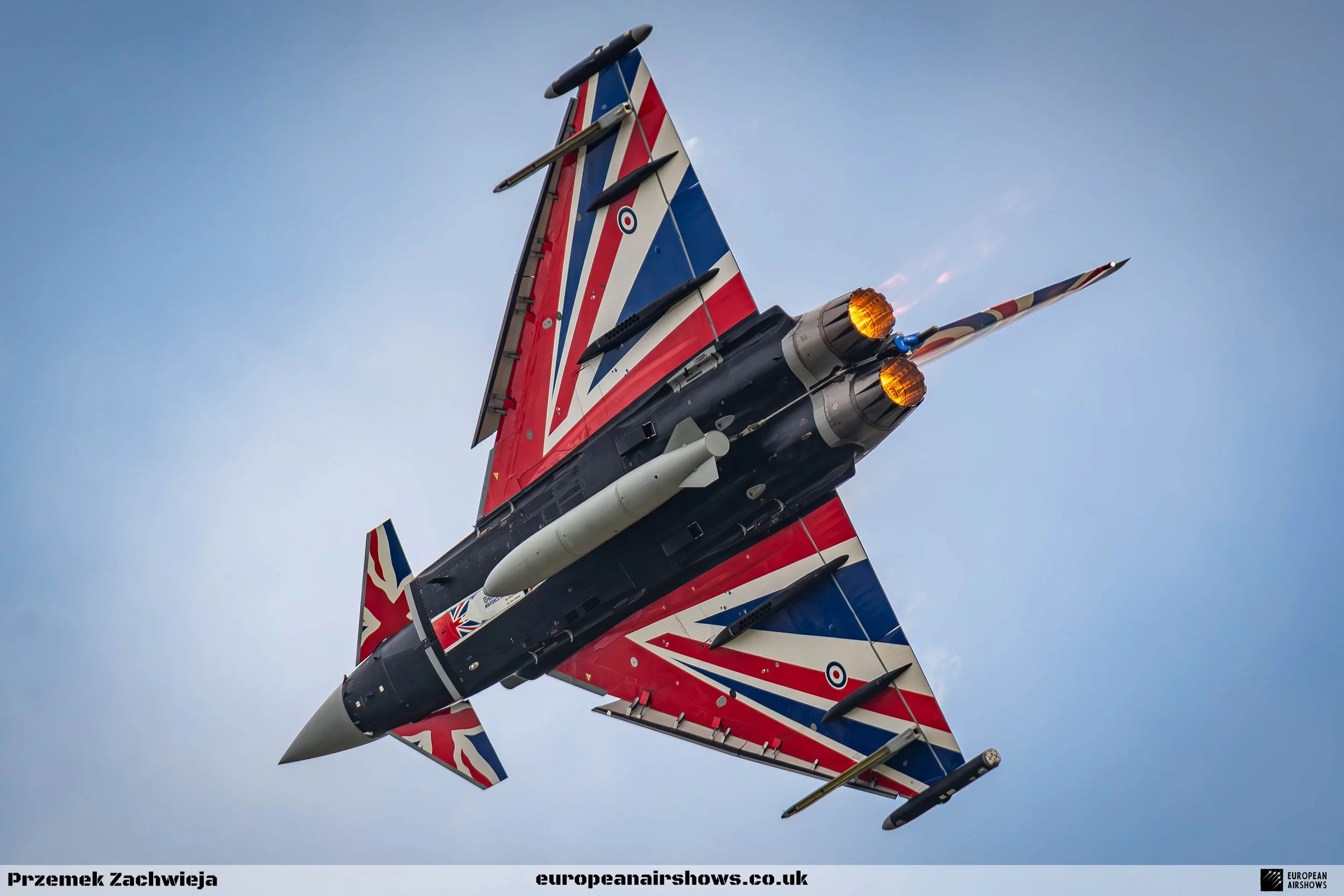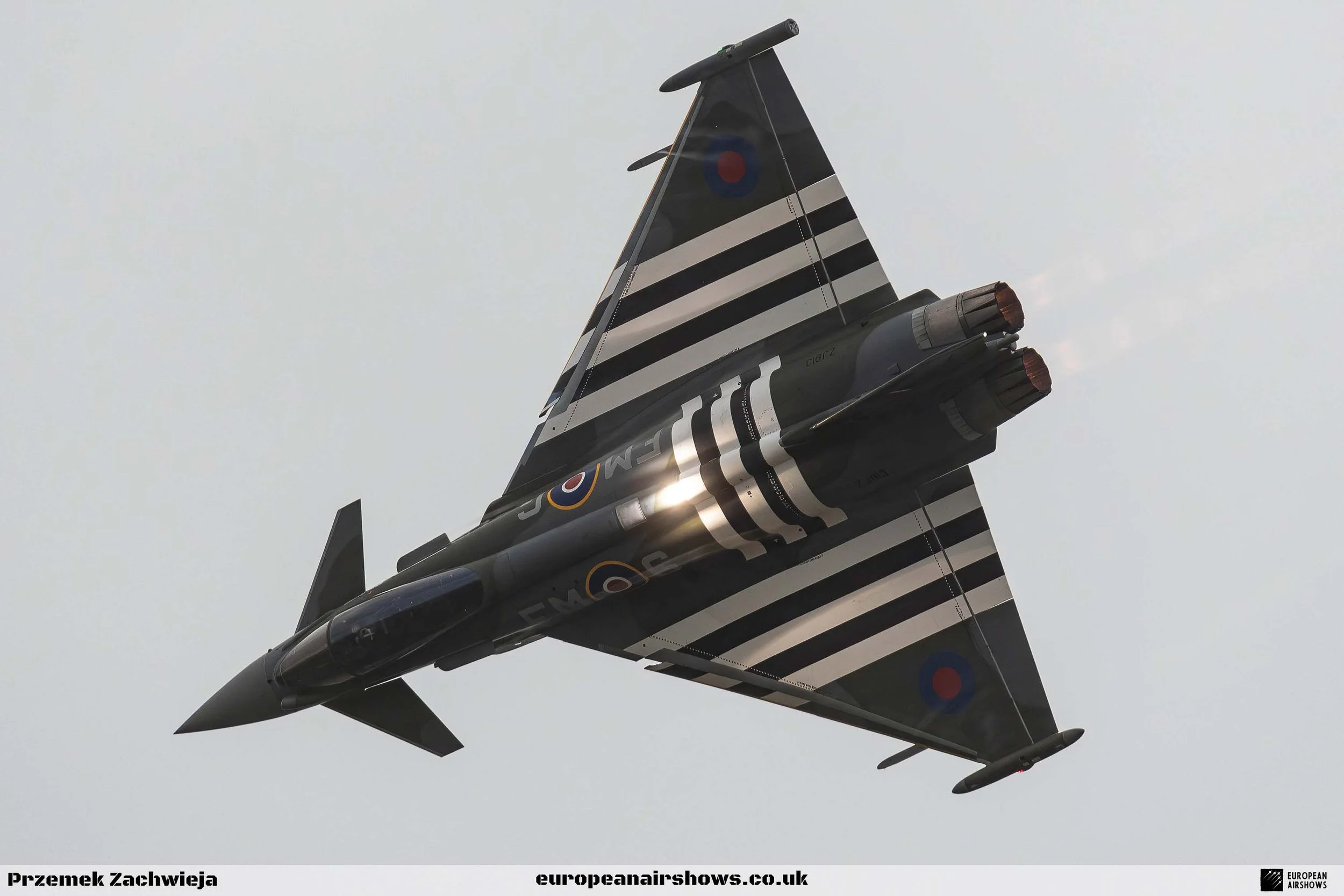
Established
Aircraft
Squadron
Base
Status
About the Display
About the Aircraft
Aircraft Specifications
Team History
Display Facts
Did You Know?
Photos
Explore images of RAF Typhoon Display Team in action.

Explore images of RAF Typhoon Display Team in action.






























